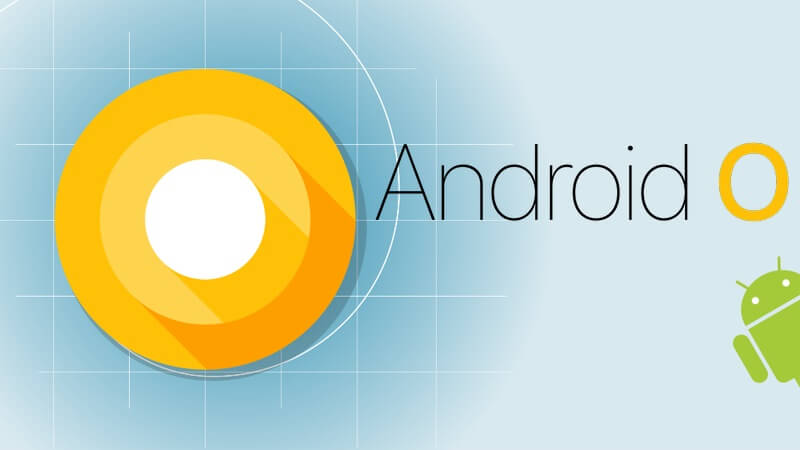We all know Google has officially announced the next major update, Android O, at #io17. But do we know what the letter ‘O’ stands for in Android O? Well, even we don’t know because they themselves have not named it yet. But what we know is Android O comes with some really useful changes and new features and is now available for few Google devices to install right away. We will talk about the Installation Steps later in this Article but as of now, let’s find out what all new stuffs we getting in this new Android O.
Also Check – How to Download and Install Android O Right Now
Notification Dots:

We have seen it earlier in Android devices using Custom Launchers. Usually when we get any new notifications for particular apps, we get a Dot or Number on that app letting us know that we have new notifications. Now, Google has embedded the same as default feature in Android O. Now if we receive any notification, that particular app will get a Dot.
Well, you might be thing we already had that earlier with custom launchers, what’s new in that? Well, the Game starts now. In Android O, if you Long Press the app icon with Dot, you get instant look at the notification in tiny pop-up window and few actions options you can perform right there. No need to go to Notification center. This might be new in Android O, but we have seen similar feature in iPhone last year, called 3D Force Touch.
Picture in Picture:
The name might sound new but this feature is also familiar for Android users. We know it as Popup Video.
In Android O, if you are watching YouTube video and tap the Home button, the video will popup in a new tiny window on your screen. You can navigate through other apps or do anything, but the video will remain on the screen. You can move the video anywhere on your display and simply slide it off the screen to close it.
Smart Text Selection:

We are aware of Text Selection, but Google is now bringing ‘Smart Text Selection’. Well, clearly it sounds smarter. Usually when we select a text, we get options to copy, past or delete or web search. But in Android O, when you select a text, if it is a phone number, you get option to directly dial it. If it is an Address, you will get option to Map Navigate directly. Now more copy pasting. Thanks to the intelligent Google AI in Android O.
Auto-Fill:
Android O brings more comfort to you. It now Auto fills your login credentials on your most used apps on your devices, login-in you instantly for the services. It usually remembers your usernames, but passwords also in some cases where you cannot be compromised.
Security & Battery Enhancements:
Of course Google tries to maintain your privacy and security in better ways with every new Android update. They continued the same with Android O as well. There’s a new tool called Google Play Protect that scans every app you install on your device. Apart from this, there’s lots more added in the security options.
Talking about the battery, Google has added new features that prevents any unused services or Apps running in the background for long. This is obviously to improve the battery backup.
Wi-Fi Aware:
Earlier we knew it as ‘Neighbor Awareness Networking (NAN)’. The new Wi-Fi Aware in Android O, you can discover and communicate with other nearby devices and apps over Wi-Fi without an Internet access point.
There are many more small and big changes done in Android O, but there’s no changes in the User Interface. However, now when you go into phone settings, you will see related icons for every single options. That’s new.
Now, since it is Android Beta released at io17, it doesn’t has everything that we can see in final version of Android O. Hence, we will keep you updated here with every new features which gets added to this new major update. Until, then let’s have a quick look at these change logs.
Background limits: Building on the work we began in Nougat, Android O puts a big priority on improving a user’s battery life and the device’s interactive performance. To make this possible, we’ve put additional automatic limits on what apps can do in the background, in three main areas: implicit broadcasts, background services, and location updates. These changes will make it easier to create apps that have minimal impact on a user’s device and battery. Background limits represent a significant change in Android, so we want every developer to get familiar with them. Check out the documentation on background execution limits and background location limits for details.
Notification channels: Android O also introduces notification channels, which are new app-defined categories for notification content. Channels let developers give users fine-grained control over different kinds of notifications — users can block or change the behavior of each channel individually, rather than managing all of the app’s notifications together.
Android O also adds new visuals and grouping to notifications that make it easier for users to see what’s going on when they have an incoming message or are glancing at the notification shade.
Autofill APIs: Android users already depend on a range of password managers to autofill login details and repetitive information, which makes setting up new apps or placing transactions easier. Now we are making this work more easily across the ecosystem by adding platform support for autofill. Users can select an autofill app, similar to the way they select a keyboard app. The autofill app stores and secures user data, such as addresses, user names, and even passwords. For apps that want to handle autofill, we’re adding new APIs to implement an Autofill service.
PIP for handsets and new windowing features: Picture in Picture (PIP) display is now available on phones and tablets, so users can continue watching a video while they’re answering a chat or hailing a car. Apps can put themselves in PiP mode from the resumed or a pausing state where the system supports it – and you can specify the aspect ratio and a set of custom interactions (such as play/pause). Other new windowing features include a new app overlay window for apps to use instead of system alert window, and multi-display support for launching an activity on a remote display.
Font resources in XML: Fonts are now a fully supported resource type in Android O. Apps can now use fonts in XML layouts as well as define font families in XML — declaring the font style and weight along with the font files.
Adaptive icons: To help you integrate better with the device UI, you can now create adaptive icons that the system displays in different shapes, based on a mask selected by the device. The system also animates interactions with the icons, and uses them in the launcher, shortcuts, Settings, sharing dialogs, and in the overview screen.





